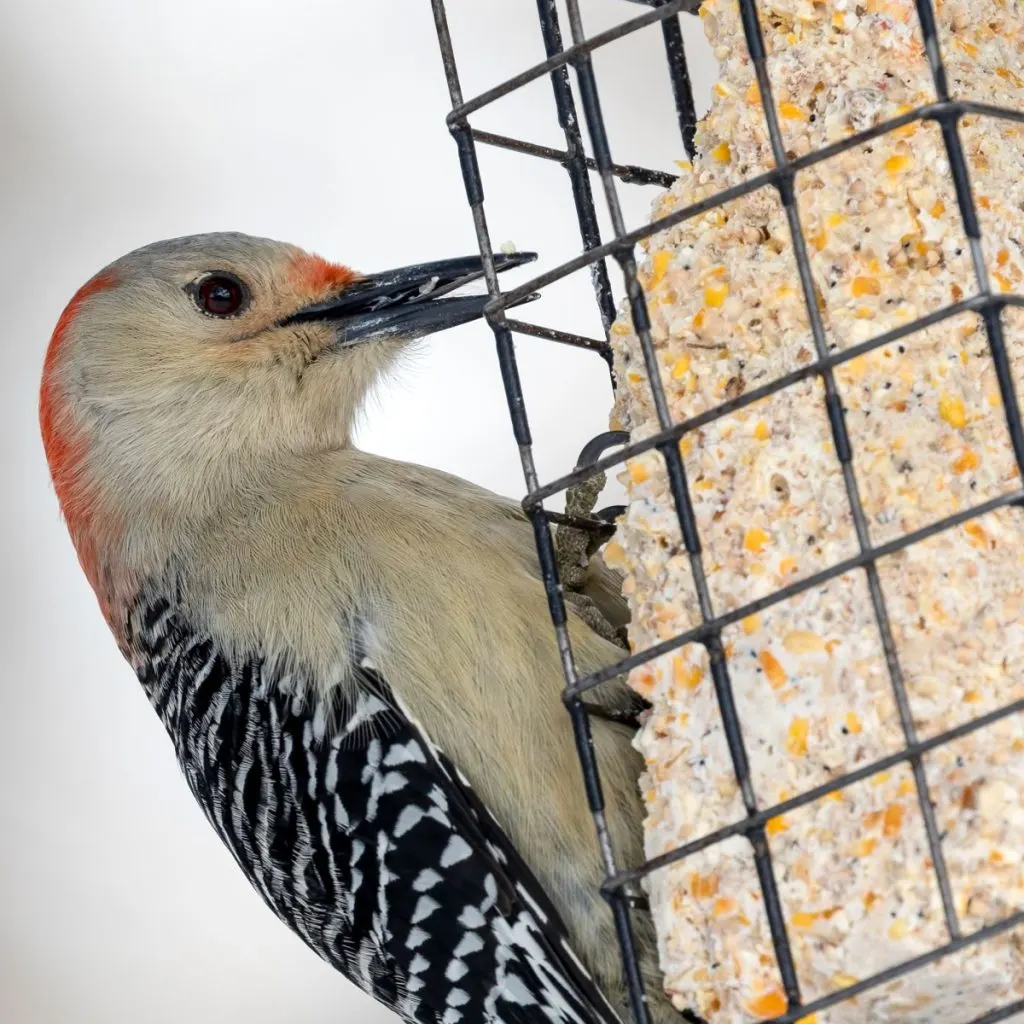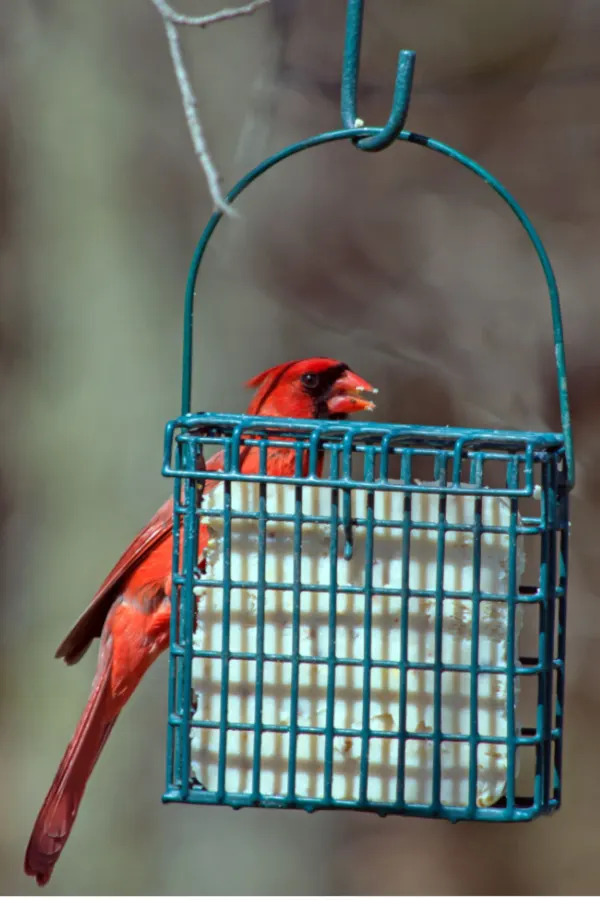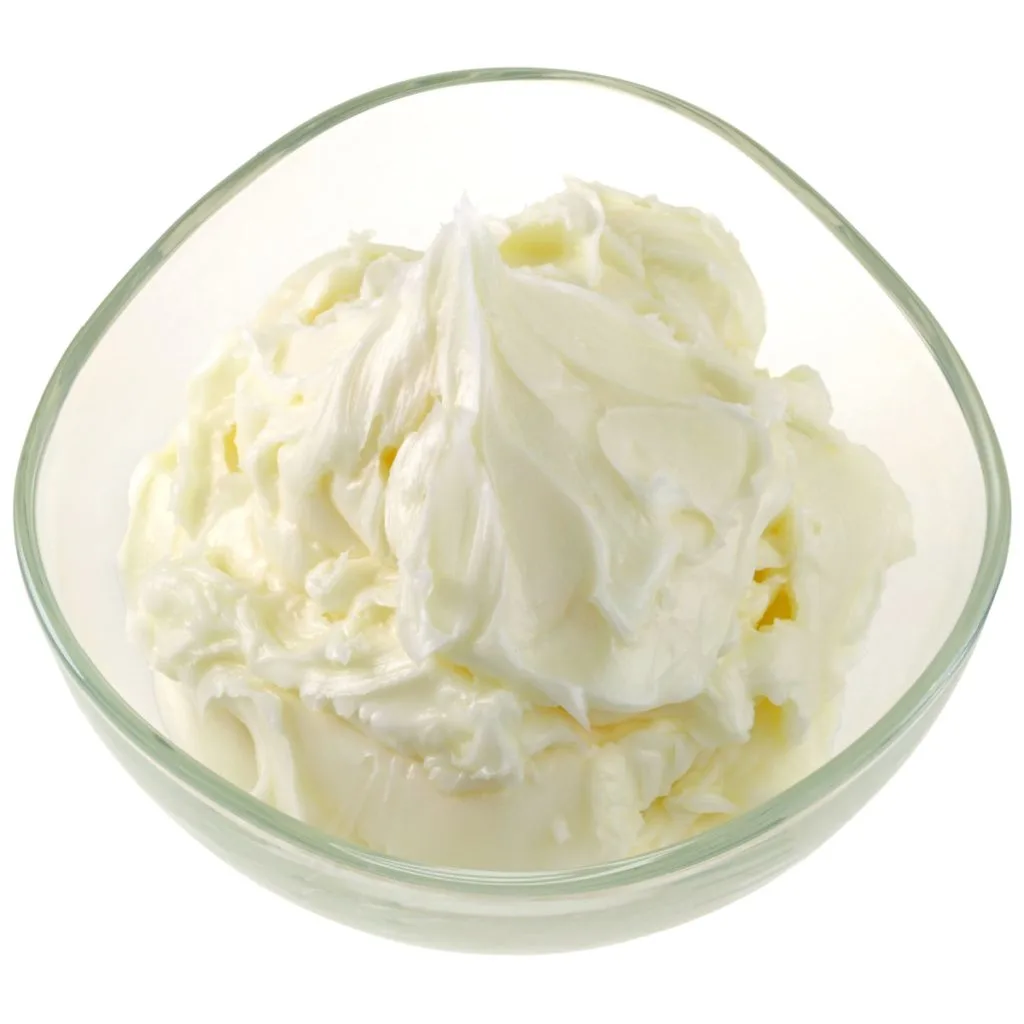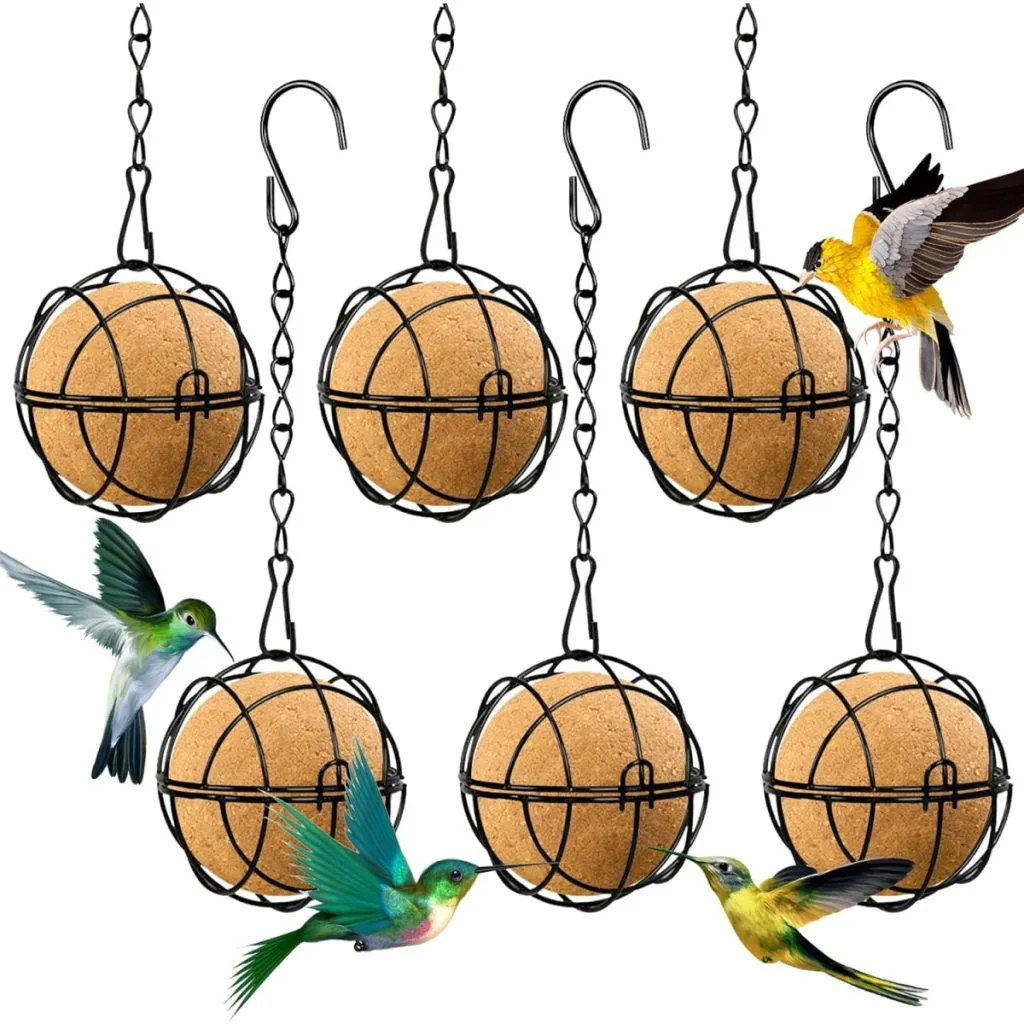One of the best ways to feed birds and help them survive the harsh winter months is to feed them bird suet – especially when you can make it yourself at home and save money in the process!
During the colder months, birds often struggle to find enough to eat as their natural food sources become more and more scarce. Most insects are dormant or have disappeared, and many seed-bearing plants have either died back, been trimmed down – or covered with a blanket of snow.
Because of those issues, many birds come to rely on people setting out birdseed in their feeders through the winter months. And although those food sources can be incredibly important to their survival – when you add suet to the mix – you can all but ensure your birds will have all of the energy and nutrition they need to take on even the toughest of winter conditions!

What Is Suet?
So what is bird suet – and how easy is to make? Bird suet is basically a type of food with its main ingredient being some type of a high calorie fat. In addition, the fat is then usually mixed with seeds, nuts, fruits, or grains.
It truly is a high-energy treat that can help birds stay warm and nourished during cold weather. And although you can buy it ready-made in stores or on-line, as it turns out – it’s actually incredibly easy and inexpensive to make bird suet right at home!
How To Make Bird Suet – The Perfect Way To Feed Birds In The Winter!
For starters, know that with suet, the types and species of birds you attract will all depend on the ingredients you mix into your suet treat. It will also depend on the type of feeder you use and its location on your property.
There is a long list of birds that love to dine on suet cakes. For starters, overwintering birds such as cardinals, jays, wrens, and woodpeckers are all big fans. As are nuthatches, chickadees, robins, orioles, and starlings. In fact, sometimes, even small hawks will come calling if the feeders are easily accessible.

Although you can certainly purchase suet cakes, it can get rather expensive when feeding them to birds all winter long. But that is where making your own at home can save the day – and it really is easier than you might think!
By simply mixing together some common household pantry items, you can create a delicious and hearty treat for birds. Even better, making your own also allows you to customize the bird suet with specific food items based on what bird species you want to attract to your feeders.
3 Simple Steps To Make Bird Suet
You can certainly change up the “extras” you add to your homemade suet, but here is a great all purpose recipe to use as a starter. This base recipe is filled with the high energy and nutritional value birds need. Especially in the winter!
Ingredients
- 1 cup rendered fat (shortening, animal fat, or lard)
- 1 cup crunchy peanut butter
- 2 cups oatmeal
- 1 cup cornmeal
- 1 to 2 cups birdseed, raisins, dried unsweetened fruit, sunflower seeds, or other nuts or seeds
Step 1: Mixing The Fat & Ingredients – How To Make Bird Suet
The main ingredient of suet is fat. And for this ingredient, you have several choices. The easiest and most readily available in home pantries is vegetable shortening. You will want to use unscented, plain vegetable shortening. Affiliate Link: Crisco All-Vegetable Shortening, 48 Ounce
You can also use beef fat or tallow, or pure lard. Always avoid fats with added salt, spices, or artificial ingredients as they can be harmful to birds
Cut your fat into small pieces to allow it to melt easier. Place the pieces into a heavy saucepan. Heat the fat slowly over medium-low heat, stirring continually until it has completely melted. Do not allow the mixture to boil or burn.
Remove the pan from the heat once it melts. If needed, strain the melted lard to remove any larger pieces. Add in the peanut butter and stir continually while the peanut butter melts. Once melted, stir in the remaining ingredients until well combined.
You can use any combination of bird seeds, raisins, dried unsweetened fruit, sunflower seeds, or any other unsalted or flavored nuts or seeds you have on hand. This is where you can cater the suet to the specific type of birds you are wanting to attract.

Step 2: Molding Suet Into Cakes Or Balls – How To Make Bird Suet
Now it is time to form your suet mix into containers, molds or roll them into suet balls. Almost any smaller container will work for this as long as you can pop out the suet after it sets. You can also freeze it in larger quantities and cut to size after it becomes solid.
If you have suet ball cages or larger cages for feeding, you can even roll them into basic balls and freeze them. They are then easy to pop into the suet cage. Affiliate Link: Bird Suet Ball Feeders, Metal Hanging Bird Feeders with Hook.
Step 3: Hardening The Suet – How To Make Bird Suet
Place the containers into the freezer or refrigerator until the suet has hardened. The amount of time it takes will vary depending on your container size and method of cooling.
You can then pop the treats out of the containers once solidified. Individually wrap them in freezer wrap and place them in freezer bags to store long-term. They can last up to a year in your freezer. When ready to use, bring them out and place them outside for the birds to enjoy.
Using Homemade Bird Suet – How To Make Bird Suet
If you already offer traditional homemade birdseed during the winter months, place your new suet feeders nearby. This allows the birds to easily get accustomed to the new feeders. Choose feeders that are easy to reach and out of harm’s way.
The feeder should have a roof or some kind of protection surrounding the suet if possible. If using ball feeders, hang them under limbs or a roof for added protection. Since Suet is an animal byproduct, keeping it out of the elements will help it to stay fresher longer and help avoid melting and spoiling.
Do not put out large quantities at a time. Only having enough suet for the birds to consume in a few days is best for avoiding unwanted critters. Thankfully, suet keeps perfectly in a freezer so you can make a large quantity and then only take out a little bit at a time for feedings.
To help avoid squirrels from enjoying your homemade suet treats, there are a few tricks you can use. See our article: How To Protect Bird Feeders From Squirrels – 4 Simple Secrets That Work!
Also keep in mind that suet is also appetizing for other critters like raccoons, mice, rats, and even some bears. Keeping feeders up off of the ground and using baffles are your best chances at protecting your homemade suet.
Here is to making your own bird suet this winter – and to helping the overwintering birds in your landscape stay warm, safe and well healthy! For more tips on keeping your backyard birds safe through the winter, see our article: 3 Simple Ways You Can Help Birds Survive Winter – Lend A Helping Hand To Birds!
Simple Garden Life
Follow Our Facebook Page For Even More Great Tips! Simple Garden Life Facebook Page
Simple Garden Life is a website dedicated to keeping gardening fun, simple and enjoyable! We publish two new articles each week along with a new garden podcast episode every two weeks. This article may contain affiliate links.


